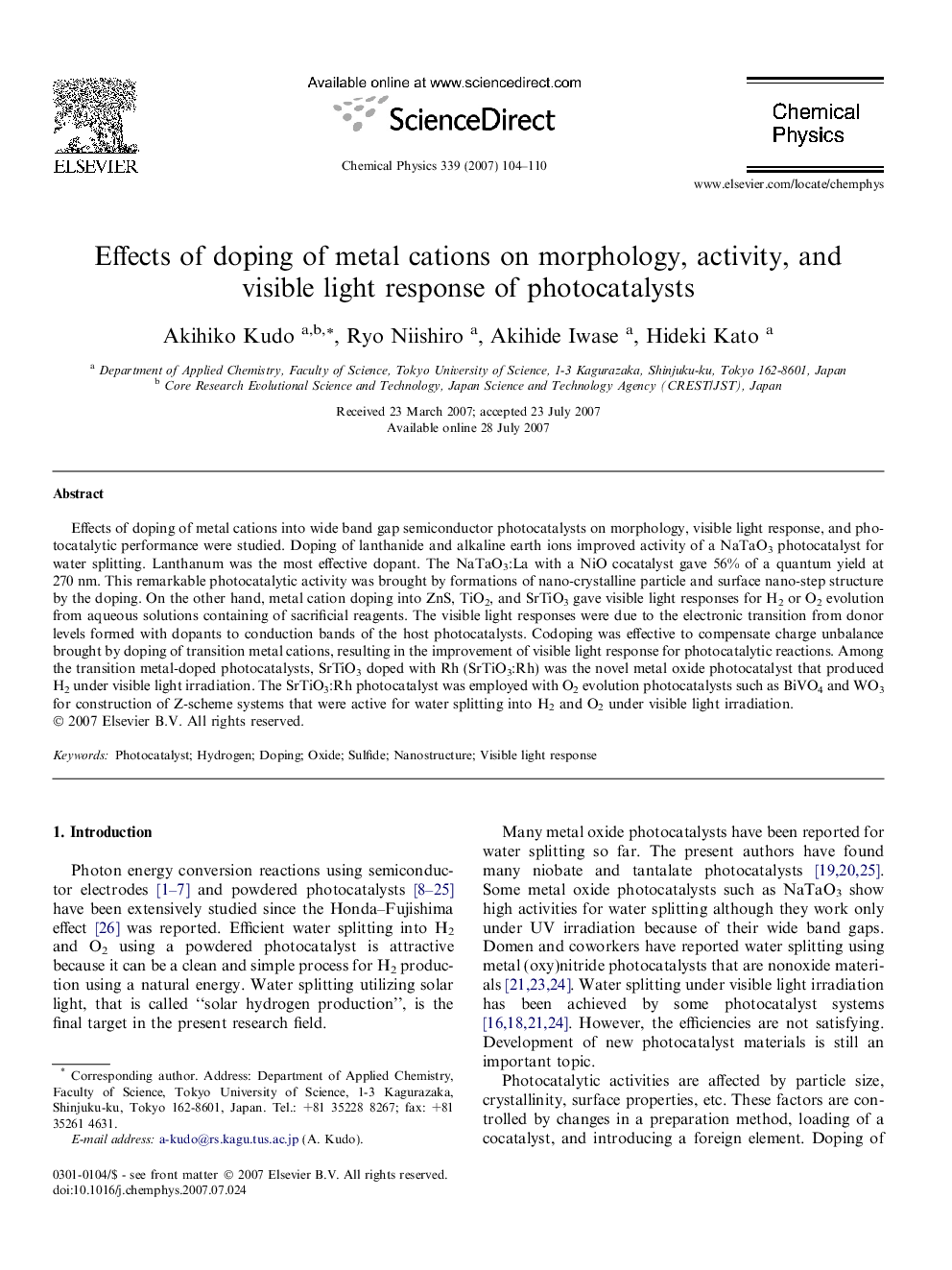| Article ID | Journal | Published Year | Pages | File Type |
|---|---|---|---|---|
| 5376323 | Chemical Physics | 2007 | 7 Pages |
Abstract
Effects of doping of metal cations into wide band gap semiconductor photocatalysts on morphology, visible light response, and photocatalytic performance were studied. Doping of lanthanide and alkaline earth ions improved activity of a NaTaO3 photocatalyst for water splitting. Lanthanum was the most effective dopant. The NaTaO3:La with a NiO cocatalyst gave 56% of a quantum yield at 270Â nm. This remarkable photocatalytic activity was brought by formations of nano-crystalline particle and surface nano-step structure by the doping. On the other hand, metal cation doping into ZnS, TiO2, and SrTiO3 gave visible light responses for H2 or O2 evolution from aqueous solutions containing of sacrificial reagents. The visible light responses were due to the electronic transition from donor levels formed with dopants to conduction bands of the host photocatalysts. Codoping was effective to compensate charge unbalance brought by doping of transition metal cations, resulting in the improvement of visible light response for photocatalytic reactions. Among the transition metal-doped photocatalysts, SrTiO3 doped with Rh (SrTiO3:Rh) was the novel metal oxide photocatalyst that produced H2 under visible light irradiation. The SrTiO3:Rh photocatalyst was employed with O2 evolution photocatalysts such as BiVO4 and WO3 for construction of Z-scheme systems that were active for water splitting into H2 and O2 under visible light irradiation.
Related Topics
Physical Sciences and Engineering
Chemistry
Physical and Theoretical Chemistry
Authors
Akihiko Kudo, Ryo Niishiro, Akihide Iwase, Hideki Kato,
